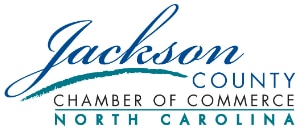
In the dynamic realm of digital marketing, pay-per-click (PPC) advertising stands as a powerhouse strategy that can yield impressive results when executed strategically. From Google Ads to social media ad platforms, PPC campaigns offer businesses the opportunity to connect with their target audience, drive traffic, and generate conversions. Let’s delve into the world of PPC advertising, explore its intricacies, and uncover strategies for creating effective campaigns that maximize ROI while optimizing costs.
Understanding PPC Advertising
PPC advertising operates on a simple premise: advertisers pay a fee each time their ad is clicked. This method offers immediate visibility, ensuring your brand is prominently displayed to potential customers. Two popular platforms for PPC campaigns are Google Ads (formerly Google AdWords) and various social media ad platforms like Facebook, Instagram, Twitter, and LinkedIn.
Benefits of PPC Advertising
- Immediate Visibility: Unlike organic methods, PPC campaigns place your ads at the forefront of search results or social media feeds, ensuring instant visibility.
- Targeted Reach: You can narrow down your audience based on demographics, location, interests, and behavior, ensuring your ads reach the most relevant users.
- Cost Control: Set your budget and bidding strategy, enabling you to manage costs effectively. You pay only when someone clicks on your ad.
- Data-Driven Insights: PPC platforms provide detailed analytics, allowing you to track clicks, impressions, conversions, and more, helping you refine your strategy.
Strategies for Effective PPC Campaigns
- Keyword Research: For Google Ads, thorough keyword research is essential. Identify relevant keywords that your target audience is likely to search for.
- Compelling Ad Copy: Craft attention-grabbing headlines and engaging ad copy that highlights the value proposition and encourages action.
- Landing Page Optimization: Ensure that the landing page your ad directs to aligns with the ad’s content and provides a seamless user experience.
- Ad Extensions: Utilize ad extensions to provide additional information like contact details, site links, and callouts to enhance the visibility and relevance of your ads.
- Audience Segmentation: On social media platforms, segment your audience based on demographics, interests, and behaviors to deliver targeted ads.
- A/B Testing: Experiment with different ad variations to identify which elements resonate best with your audience and yield higher conversions.
- Bid Strategy: Opt for an appropriate bid strategy – whether it’s cost per click (CPC), cost per thousand impressions (CPM), or cost per acquisition (CPA).
- Negative Keywords: Exclude irrelevant keywords to avoid wasting budget on clicks that won’t convert.
- Ad Schedule and Geotargeting: Choose the right times and locations for your ads to display, ensuring they reach your target audience at optimal times.
Balancing ROI and Costs
While PPC advertising offers great potential, it’s essential to strike a balance between achieving high ROI and managing costs. Regularly monitor your campaigns, analyze the data, and optimize your strategy accordingly. Adjust bids, tweak ad copy, and refine targeting based on performance insights.
Embark on Your PPC Journey
PPC advertising is a dynamic tool that can yield substantial rewards when wielded skillfully. By understanding the nuances of different platforms, employing effective strategies, and continuously refining your approach, you can unlock the potential of PPC campaigns to drive traffic, conversions, and ultimately, growth for your business. So, embark on your PPC journey, connect with your audience, and witness the transformative power of pay-per-click advertising.


